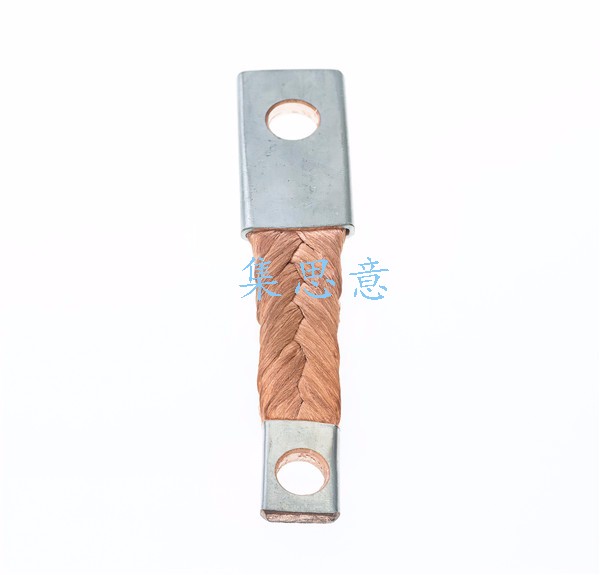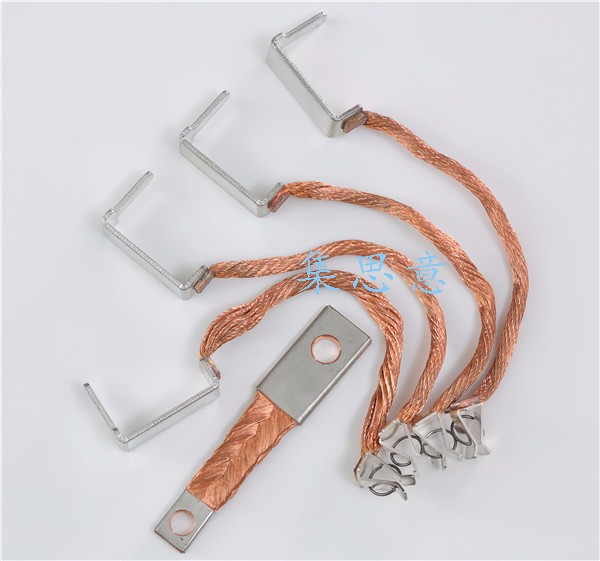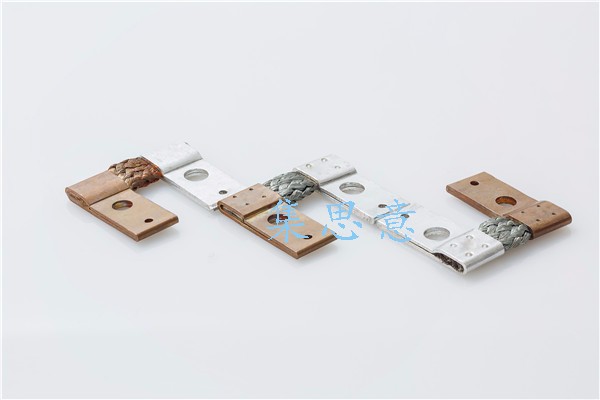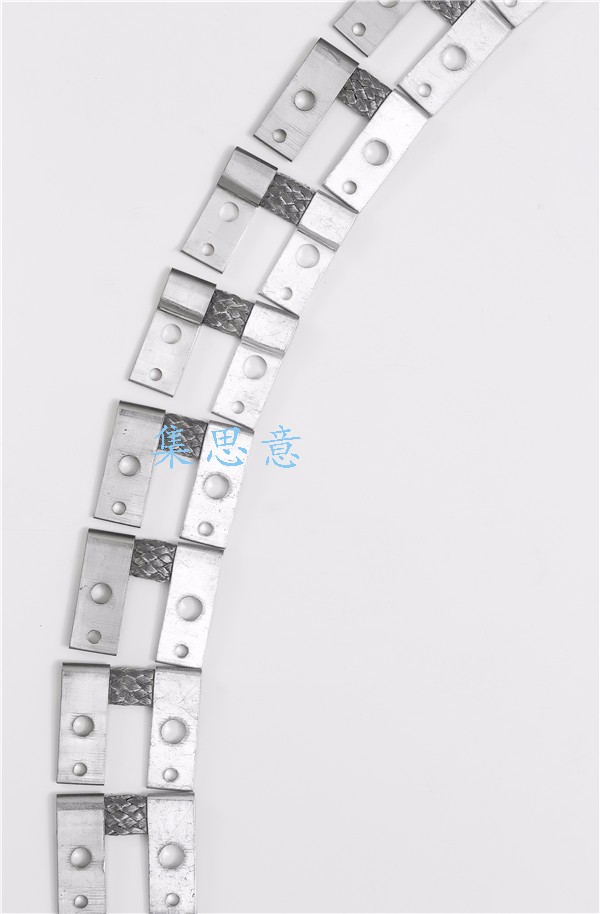What factors affect the resistivity of carbon brush leads?
1、 The characteristics of the material itself
The material is the core factor determining the electrical resistivity of carbon brush leads. The inherent resistivity of different materials varies significantly: pure copper materials have lower lead resistivity because copper atoms have a large number of free electrons and low resistance to movement, which can efficiently conduct current; And alloy materials (such as copper nickel alloy, copper tin alloy, etc.), due to the addition of alloying elements, will change the atomic arrangement structure, increase the scattering probability of electron movement, resulting in higher electrical resistivity than pure copper. In addition, if the lead is coated with materials such as tin plating or silver plating, the material and thickness of the coating will also affect the overall resistivity. For example, silver has a lower resistivity than tin, and the silver plating layer can reduce the contact resistance to a certain extent.
2、 Temperature variation
Temperature is an important environmental factor that affects resistivity. For carbon brush leads made of metal materials, as the temperature increases, the thermal motion of metal atoms intensifies, and the probability of free electrons colliding with atoms during conduction increases, resulting in an increase in resistance, that is, the resistivity increases with increasing temperature. On the contrary, in low-temperature environments, atomic thermal motion weakens, electron collisions decrease, and electrical resistivity decreases accordingly. However, this change is not infinite. When the temperature drops to an extremely low level (such as near absolute zero), some metals may exhibit superconductivity. However, within the normal operating temperature range of carbon brush leads, the main trend is an increase in temperature and resistivity.
3、 Processing technology
The process treatment during the manufacturing process can alter the microstructure of the lead, thereby affecting the electrical resistivity. For example, if the lead is subjected to excessive mechanical stress during stretching, twisting, and other forming processes, it may cause defects or misalignment in the internal crystal structure, increase obstacles to electron movement, and increase electrical resistivity. The annealing process can rearrange metal atoms through heating, eliminate some crystal defects, and reduce electrical resistivity. In addition, surface treatment processes such as polishing and cleaning can also affect the contact resistivity. If there is an oxide layer, oil stains, or impurities on the surface of the lead, an additional resistance layer will be formed, resulting in an overall increase in resistivity.
4、 Environmental erosion
Long term exposure to harsh environments can cause changes in the electrical resistivity of leads due to corrosion, oxidation, and other issues. In environments that are humid, dusty, or contain corrosive gases such as acid and alkali, the surface of the lead is prone to oxidation reactions or chemical corrosion, forming oxide films or corrosion layers. The conductivity of these substances is usually poor, which can reduce the effective conductive cross-sectional area of the lead or increase the contact resistance, resulting in an overall increase in resistivity. For example, copper leads are prone to generate copper oxide in humid environments, which has a much higher electrical resistivity than copper and significantly affects the conductivity of the lead.
In summary, the electrical resistivity of carbon brush leads is the result of multiple factors such as material properties, temperature, processing technology, and environment. These factors need to be comprehensively considered in the design, production, and use processes to ensure that the electrical resistivity of the leads meets application requirements.
The material is the core factor determining the electrical resistivity of carbon brush leads. The inherent resistivity of different materials varies significantly: pure copper materials have lower lead resistivity because copper atoms have a large number of free electrons and low resistance to movement, which can efficiently conduct current; And alloy materials (such as copper nickel alloy, copper tin alloy, etc.), due to the addition of alloying elements, will change the atomic arrangement structure, increase the scattering probability of electron movement, resulting in higher electrical resistivity than pure copper. In addition, if the lead is coated with materials such as tin plating or silver plating, the material and thickness of the coating will also affect the overall resistivity. For example, silver has a lower resistivity than tin, and the silver plating layer can reduce the contact resistance to a certain extent.
2、 Temperature variation
Temperature is an important environmental factor that affects resistivity. For carbon brush leads made of metal materials, as the temperature increases, the thermal motion of metal atoms intensifies, and the probability of free electrons colliding with atoms during conduction increases, resulting in an increase in resistance, that is, the resistivity increases with increasing temperature. On the contrary, in low-temperature environments, atomic thermal motion weakens, electron collisions decrease, and electrical resistivity decreases accordingly. However, this change is not infinite. When the temperature drops to an extremely low level (such as near absolute zero), some metals may exhibit superconductivity. However, within the normal operating temperature range of carbon brush leads, the main trend is an increase in temperature and resistivity.
3、 Processing technology
The process treatment during the manufacturing process can alter the microstructure of the lead, thereby affecting the electrical resistivity. For example, if the lead is subjected to excessive mechanical stress during stretching, twisting, and other forming processes, it may cause defects or misalignment in the internal crystal structure, increase obstacles to electron movement, and increase electrical resistivity. The annealing process can rearrange metal atoms through heating, eliminate some crystal defects, and reduce electrical resistivity. In addition, surface treatment processes such as polishing and cleaning can also affect the contact resistivity. If there is an oxide layer, oil stains, or impurities on the surface of the lead, an additional resistance layer will be formed, resulting in an overall increase in resistivity.
4、 Environmental erosion
Long term exposure to harsh environments can cause changes in the electrical resistivity of leads due to corrosion, oxidation, and other issues. In environments that are humid, dusty, or contain corrosive gases such as acid and alkali, the surface of the lead is prone to oxidation reactions or chemical corrosion, forming oxide films or corrosion layers. The conductivity of these substances is usually poor, which can reduce the effective conductive cross-sectional area of the lead or increase the contact resistance, resulting in an overall increase in resistivity. For example, copper leads are prone to generate copper oxide in humid environments, which has a much higher electrical resistivity than copper and significantly affects the conductivity of the lead.
In summary, the electrical resistivity of carbon brush leads is the result of multiple factors such as material properties, temperature, processing technology, and environment. These factors need to be comprehensively considered in the design, production, and use processes to ensure that the electrical resistivity of the leads meets application requirements.






